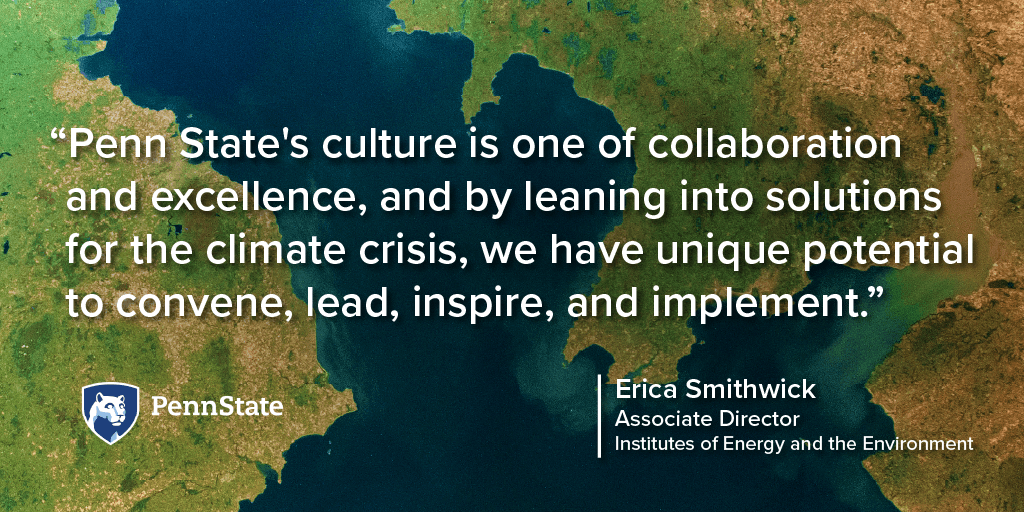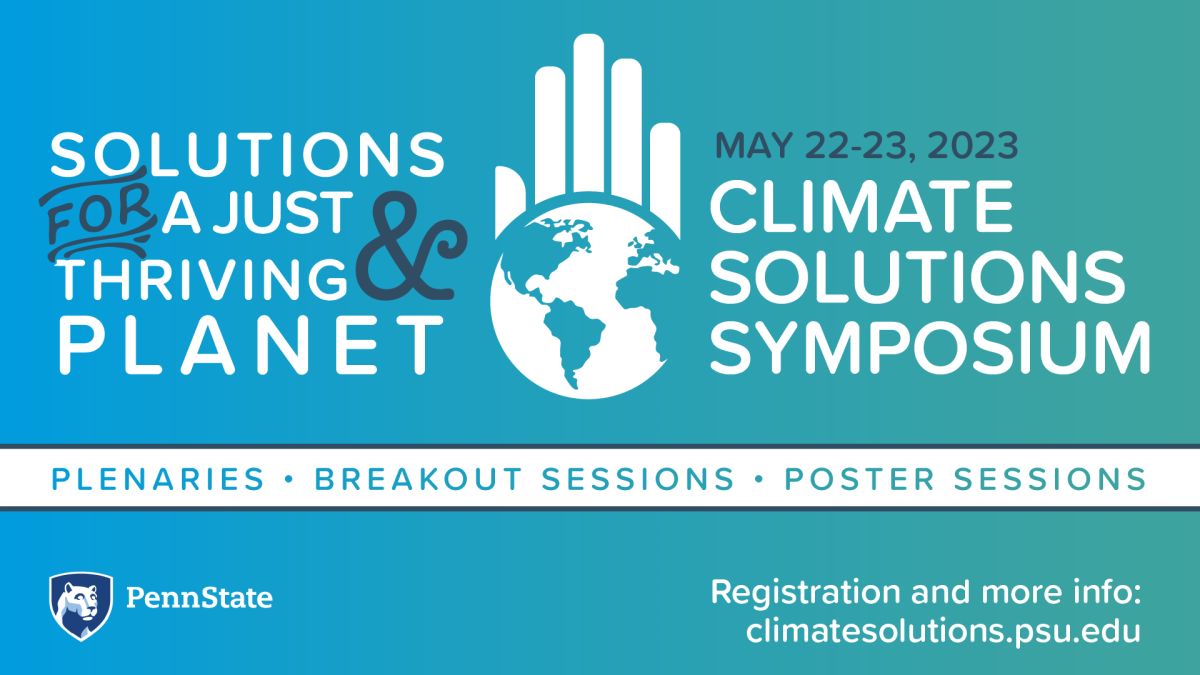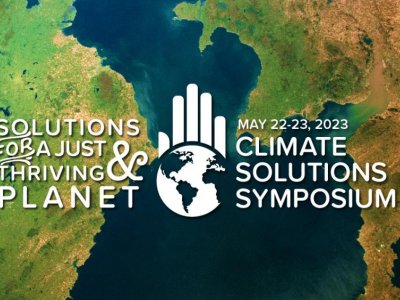The Climate Solutions Symposium will be held on May 22 and 23, 2023. We spoke with Erica Smithwick, one of the symposium's organizers, to learn more about the climate crisis and the solutions being developed to improve mitigation, adaptation, and resilience.
We keep hearing about climate change, but, according to reports/media coverage, it doesn't appear to be getting any better. Is this accurate? If so, why?
It's true that the Earth is still warming due to the continued release of greenhouse gases like carbon dioxide and methane into the atmosphere. This is having increasingly deleterious impacts on society and the environments that we depend on. Arctic sea ice extent is decreasing 12% per decade. Carbon dioxide concentrations are the highest they've been in 800,000 years, resulting in increasing temperatures globally. And the effects on humans are being felt more frequently through, for example, increased volatility in extreme weather events and impacts on human health. We're likely to see the impacts continue for some time, even if changes are made today, because of the long time periods that greenhouse gases remain in the atmosphere. But, every amount of fossil fuels we don't emit into the atmosphere matters! Avoiding fossil fuel emissions now and finding strategies to remove excess carbon dioxide from the atmosphere can together reduce the risk of seeing the most extreme effects of climate change.

What kinds of solutions need to occur to make a dent in climate change?
Well, first, we need to talk about it. We need to start having conversations about why it matters to avoid the worst of the climate crisis and how we can work together to find solutions. If we don't talk about it, we won't solve the problem. The Climate Solutions Symposium is a chance for us — within and beyond the Penn State community — to talk about solutions to the climate crisis.
Second, we need to inspire. We have thousands of solutions that are being created across the world, many of which are win-win-win: Helping create jobs, cleaning up the environment, and solving the climate crisis. The climate challenge can seem insurmountable, but there are solutions, and everyone can help make them a reality.
Third, we need to get to work. This means identifying solutions that matter, especially those that can provide durable solutions, ones that can scale rapidly, and ones that support the most vulnerable communities that are hardest hit by climate change. These solutions are going to be technical and social. Innovations are going to happen in industry as well as academia. Policies are going to be implemented at local, national, and global scales. So, we need to work together and coordinate our actions to have the most effect, and this means partnerships.
How is Penn State an organization that can make an impact?
As a land-grant institution, we've always had a duty to guide Pennsylvanians towards a more sustainable future, and through our global partnerships, our industrial and entrepreneurial enterprise, and our alumni network, we have a reach that extends more broadly. We have over 300 scientists and countless students actively working on climate solutions across our network of colleges and campuses. Our strengths in interdisciplinary approaches to research set us apart because we are able to tackle complex climate issues in ways that few other entities can. Penn State's culture is one of collaboration and excellence, and by leaning into solutions for the climate crisis, we have unique potential to convene, lead, inspire, and implement.
Why is having a symposium about climate solutions a good step toward making a difference?
There are countless opportunities to hear about individual solutions to pieces of the climate challenge, and plenty of places to hear about the problems, but very few opportunities to discuss solutions. The symposium will create opportunities to discuss topics such as climate and health, natural carbon solutions, sustainable aviation and responsible travel, arts and communication, policy, business and finance innovation, and much more. We imagine the Climate Solutions Symposium to provide opportunities to talk with collaborators and future partners who might be in other departments, colleges, or sectors about how, by coming together, we can identify tractable and durable solutions, or at least create a sense of shared commitment and pathways for future engagement.

What is your hope for the symposium?
I hope the halls are buzzing with a spirit of optimism, that relationships are forged or rekindled, and that the stage is set for engagement that will last beyond the two days of the conference.
Who should come to the Climate Solutions Symposium?
We are inviting anyone who has an interest in contributing to solutions to the climate crisis, through research, education, outreach, or operations. Our focus will be on the interdisciplinary research opportunities in all these spaces, and we are excited to welcome participants from the University, but also foundations, agency and government representatives, NGOs, alumni, and more.





